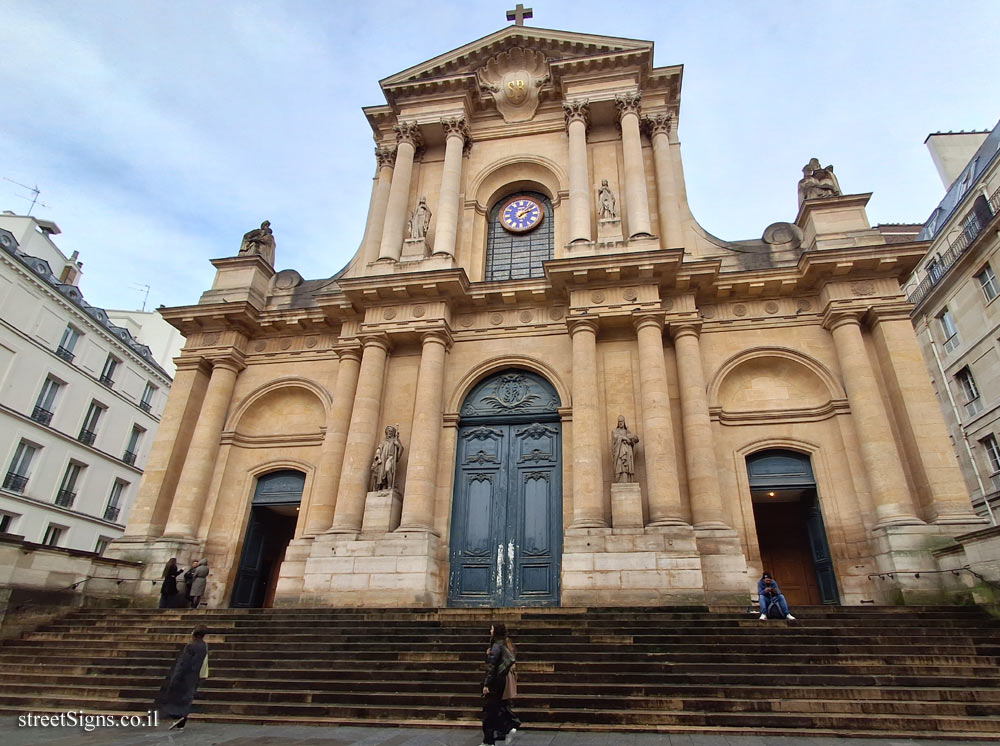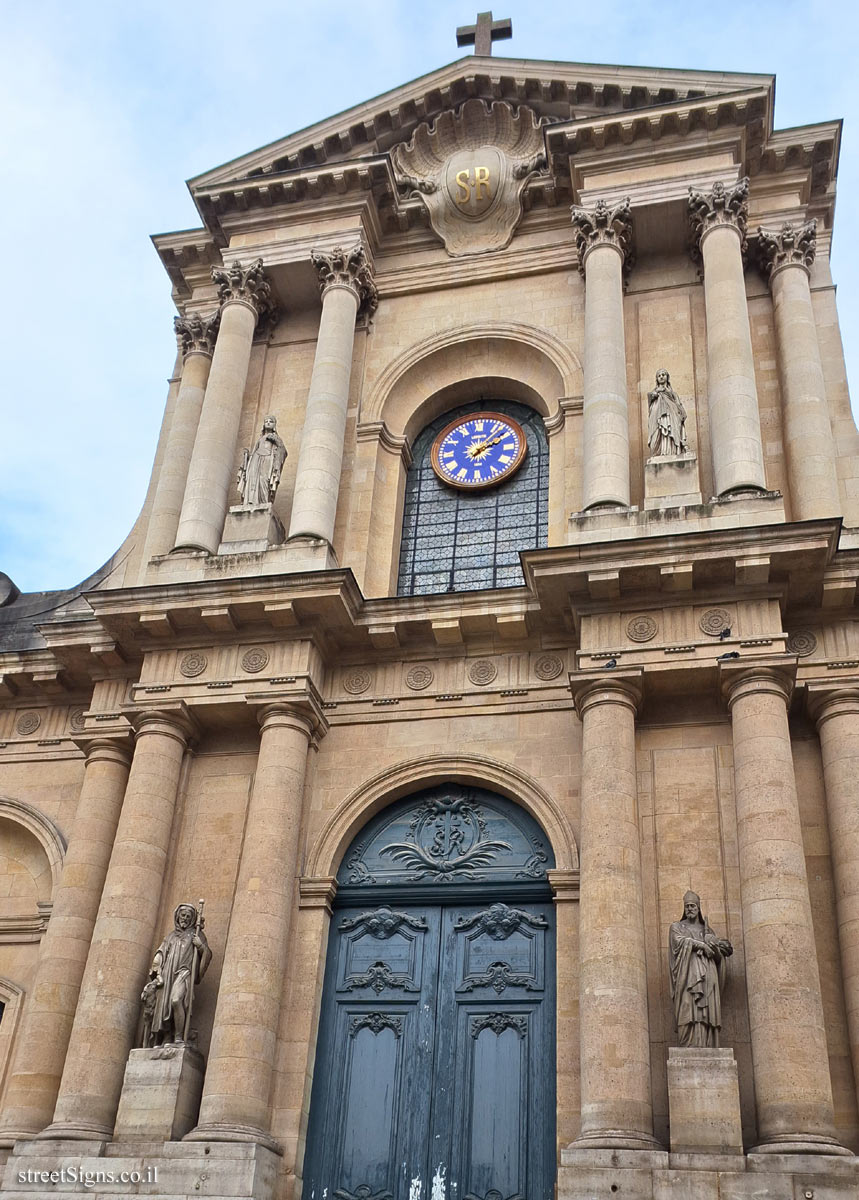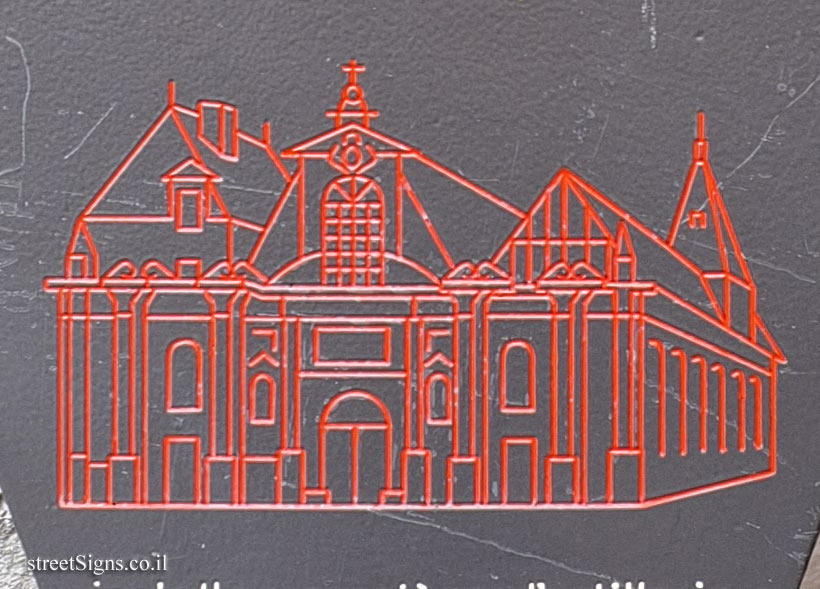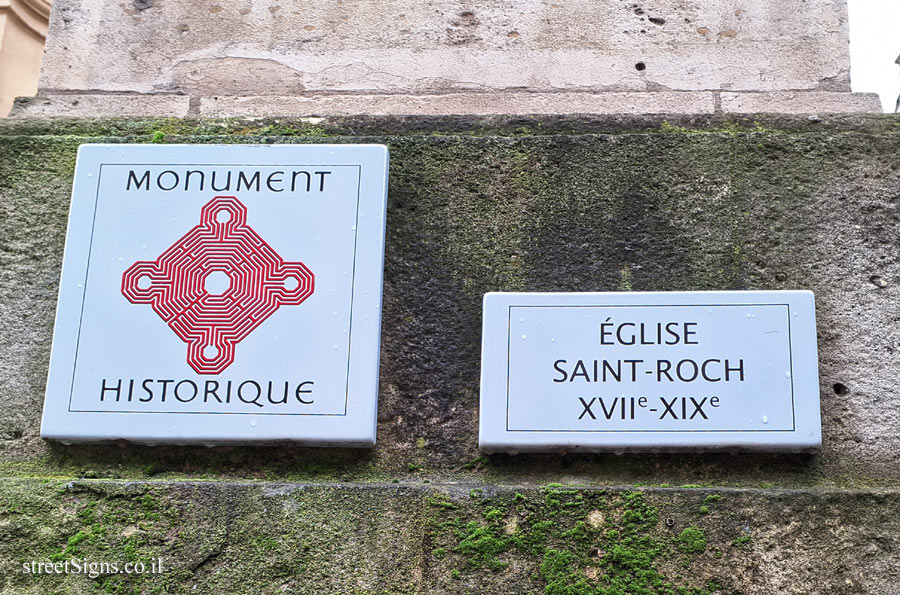One of the series of signs describing historical places in Paris. The signs were placed starting in 1992 and are also called sucettes Starck (Starck’s Lollipops) after Philippe Starck who designed them.
The sign depicts the Saint-Roch Catholic Church, a church dedicated to Saint Roch who is known to have worked miracles and healed pilgrims to Rome who were sick with the plague.
The baroque church was designed by Jacques Lemercier and opened to the public in 1653.
During the French Revolution in 1795 (the days of the Royalist Rebellion - 13 Vendémiaire, the fourth year) battles took place in the church square between the forces of the revolutionaries and the supporters of the monarchy.
The church was photographed on the same day
 Click for a larger image
Click for a larger image  Click for a larger image
Click for a larger image The illustration in the center of the sign is shown here at magnification
 Click for a larger image
Click for a larger image The place is defined as a historical heritage site of France, as you can see in the following sign that was taken that day
ÉGLISE
SAINT-ROCH
XVIIe-XIXe
MONUMENT HISTORIQUE
 Click for a larger image Translation of the text on the sign
Click for a larger image Translation of the text on the sign:
[An illustration of a ship, symbolizing the symbol of Paris]
History of Paris The Church of Saint-Roch In 1521, a chapel called Sainte-Suzanne or Cing-Plaies was built here. Enlarged in 1577, it is placed under the patronage of Saint Roch. Built in 1633 as a parish church, Saint-Roch was rebuilt by Le Mercier. Due to lack of money, the project drags on. In 1719, the financier John Law converted to Catholicism and made a donation of 100,000 pounds which allowed the nave to be completed. The facade designed by Robert de Cotte was finally built, and the church was consecrated on July 10, 1740. On October 5, 1795 (13 Vendémiaire Year IV), General Bonaparte installed an artillery piece in the Dauphin cul-de-sac ( extension of rue St-Roch towards the south) and machine-gunned the royalist insurgents massed on the steps of the church.
[Illustration of the Church]

 Click for a larger image
Click for a larger image  Click for a larger image
Click for a larger image  Click for a larger image
Click for a larger image  Click for a larger image
Click for a larger image